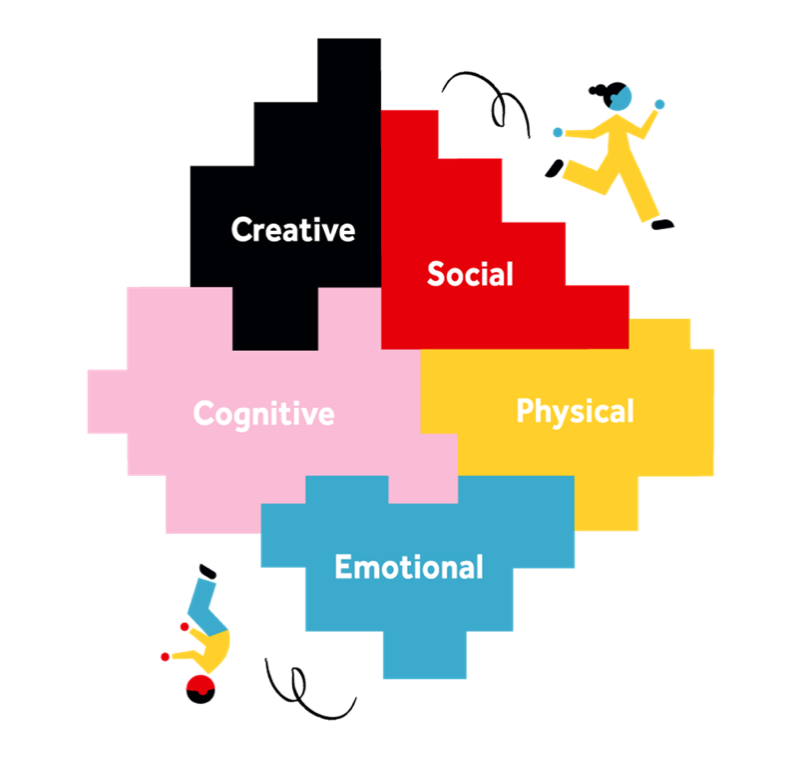By: Kathleen Hill
When you hear the word “LEGO”, what do you think of? The colorful blocks that were a pillar of classrooms or playdates for many children around the world or a foundation that strives to create lifelong learners (and creatives) through play?
The LEGO Foundation shares its overall mission “with the LEGO Group – to inspire and develop the builders of tomorrow. It demonstrates our shared heritage and is the guiding star for everything we do.” More specifically, “the LEGO Foundation aims to build a future in which learning through play empowers children to become creative, engaged, lifelong learners. We are dedicated to re-defining play and re-imagining learning to ensure children build the broad set of skills they need to thrive and succeed.”
In many ways, their two goals of redefining play and re-imagining learning are steeped in familiar arguments to arts managers and artists, especially when they emphasize play shifting out of the “nice but not necessary mindset” and learning needing a creative reboot to best prepare children for work in the 21st century.
As part of this creative reboot, LEGO takes a holistic view when it comes to reimagining learning by highlighting the ways in which children’s physical, social, cognitive, creative and emotional skills complement and interact with one another through play.
When these skills are being successfully cultivated, it makes an essential truth of the arts and culture field abundantly clear: creativity matters!
To drive this point home, the LEGO Foundation is publishing a series of reports that “convene a broad spectrum of viewpoints and opinions focused on creativity in education systems.” Their most recent report is Creating Creators.
Creating Creators explores the question, “How can we enhance creativity in education systems?”
With creativity on track to be one of the top three skills employers demand in face of the Fourth Industrial Revolution, the need to bring creativity back into the classroom is immediate and prescient. But how can creativity be taught? How can creativity be built into grade-level and content standards?
To begin exploring such questions, Creating Creators convenes perspectives from seven reform-oriented thinkers who represent various opinions across the education sector – Academic, Assessor, Enabler, Government, Learner and Teacher. “Together, the contributors consider why it is important to develop students’ creativity, how Learning through Play and other techniques can be used to enhance this skill in the classroom, and the ways creativity can be assessed.”
The contributors are: 1) Angelina Angie Matsie Motshekga, Minister of Basic Education, Republic of South Africa; 2) Dr. Helen Charman, Director of Learning and National Programmes, Victoria and Albert Museum (United Kingdom); 3) Andreas Schleicher, Director for the Directorate of Education and Skills, OECD; 4) Mitchel Resnick, LEGO® Papert Professor of Learning Research, MIT Media Lab; 5) Dr. Vicki Phillips, CEO in Residence – Educurious, Former Secretary of the Pennsylvania Department of Education, USA; 6) Karabo Rithuri, Student, University of Pretoria, Republic of South Africa; and, 7) Andria Zafirakou, Associate Deputy Headteacher, The Alperton Community School.
WHY IS CREATIVE GENERATION EXCITED ABOUT THIS REPORT?
Creativity is developed, catalyzed, and realized through arts and culture education. Whether that be in a student’s visual arts classroom or through arts integration opportunities in subjects like math or science, it is difficult to engage in the arts without creative learning and creative play.
Arts education activists have been endeavoring for years to create parity between their subjects and other “core” subjects. They fight for equal funding, equal emphasis in a well-rounded education, equal opportunities for students to engage regardless of school or school district, equal opportunities to engage across arts disciplines — the list goes on!
Reports like Creating Creators drive the importance of their endeavors home. Arts education activists in the US do not lobby every year for better and stronger arts and culture education because it is “nice”. They lobby because arts and culture education is fundamental in safeguarding the success of their students as they navigate the world around them — is fundamental to their holistic development.
This is just one of the many reasons why we believe arts and culture education is a fundamental, civil, and human right. To be creative is to be thriving and flourishing.
We’re excited to see where this arm of research takes the foundation in the coming years.
-
Hill, K. (2020, December 14). Creating Creators - New Report from the Lego Foundation. Creative Generation Blog. Creative Generation. Retrieved from https://www.creative-generation.org/blogs/creating-creators-new-report-from-the-lego-foundation

